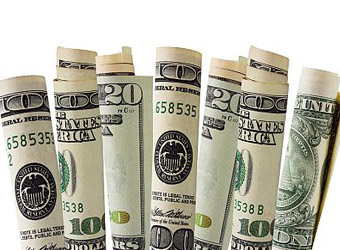U.S. dollar fell on Friday, easing from a roughly two-month high against the yen touched in the prior session and slumping against the euro, after weaker-than-expected U.S. economic data raised doubts about whether the Federal Reserve will assume a hawkish bent through the end of the year.
The U.S. core CPI increased 1.9 percent year-on-year in April, the smallest gain since October 2015, after rising 2.0 percent in March. Economists polled by Reuters expected the inflation measure to remain at 2 percent.
In addition, the Commerce Department said retail sales rose 0.4 percent last month. While March saw an upwardly revised 0.1 percent gain, the April figure disappointed expectations of economists polled by Reuters for an increase of 0.6 percent.
Federal funds futures implied traders saw about a 49 percent chance the Fed would increase rates twice by the end of 2017 , compared with 54 percent shortly before the release of the latest readings on U.S. store sales and the consumer price index, CME Group’s FedWatch program showed.
Its building on a theme of the last several months which is the actual inflation prints on the core are very non-threatening, said Richard Franulovich, senior currency strategist at Westpac Banking Corp in New York, in reference to the core CPI reading.
“The Fed is still going to be hiking probably two more times this year, but the urgency to act and deliver a hawkish thrust to their actions is not there.”
The euro rose as much as 0.6 percent against the dollar to a session high of $1.0928. The euro had fallen to a more than two-week low on Thursday of $1.0838.
The dollar fell as much as 0.6 percent against the yen to a session low of 113.21 yen after hitting a roughly two-month high of 114.36 yen on Thursday.
The dollar index, which measures the greenback against a basket of six major rivals, was last down 0.4 percent at 99.265 . It was still on track to gain about 0.6 percent for the week to notch its first gain in five weeks.
Friday’s inflation data hurt the dollar partly because it was disappointing after strong U.S. April import and producer price readings released earlier this week, said Greg Anderson, global head of foreign exchange strategy at BMO Capital Markets in New York.
Source: Reuters
